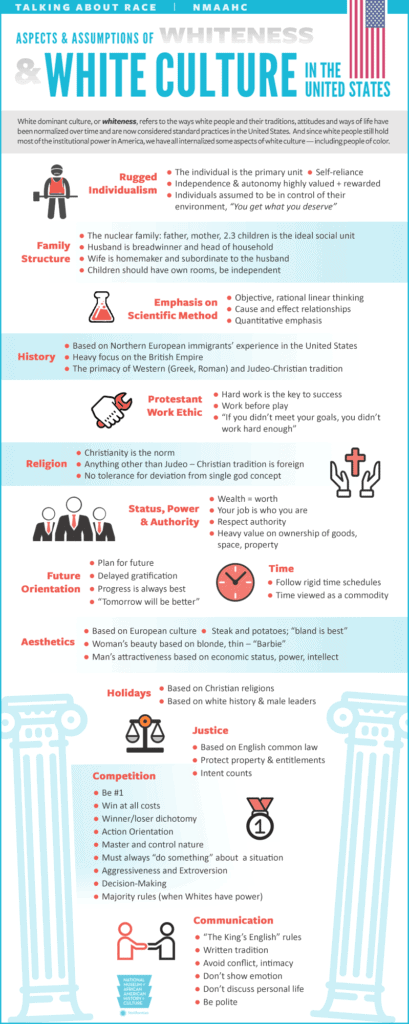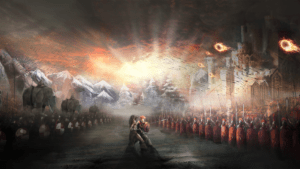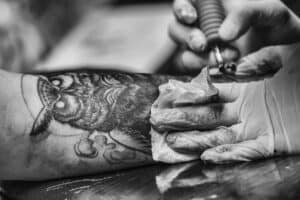Robin DiAngelo’s Agenda: Division Not Unification
It is strange how easily almost any Socialist writer can lash himself into frenzies of rage against the class to which, by birth or by adoption, he himself invariably belongs.
George Orwell, The Road to Wigan Pier Tweet
Superficially reading White Fragility or considering the publication in isolation, might give readers the false impression that although DiAngelo lacks intellectual integrity, she is genuinely concerned with fostering meaningful cross-cultural relationships. However, DiAngelo’s redefinition of racial terminology and her refusal to present possible solutions,1 indicates a potentially more profound agenda, prompting us to investigate further. While DiAngelo focuses upon racial aspects in this publication, she maintains a much broader, preconceived sociological framework, which segregates societies into subpopulations based upon other factors, including class, gender, sexuality, religion, nationality, age, and aptitudes or abilities.2 Inevitably, disparities emerge when comparing these groups, and DiAngelo attributes any inequality to inequality produced by a systemic injustice (e.g., racism, sexism, or xenophobia).3 Accordingly, the group perceived as maintaining general social, ideological, economic, political, or institutional advantage, is considered the dominant/oppressive faction, whereas everyone else falls into the minoritized/oppressed group.4 For example, in White Fragility, DiAngelo bifurcates the American populace into white and non-white groups, and racism remains the default attribution for any incongruence between the groups, without consideration of any alternate explanations.
However, a broader political agenda becomes apparent as DiAngelo explains that people of color can be socialized into the white-supremacist system and are also culpable in the racism directed toward minority groups. Elucidating this concept, DiAngelo writes, “in a racist society, the desired direction is always toward whiteness and away from being perceived as a person of color.”5 Meaning that through processes of assimilation, ethnic minorities can occasionally achieve white status, or attain a position within the racist system, without disrupting the foundations of white supremacy.6 Since superficial biological characteristics or physical phenotypes underscore the very concept of race, it would seem impossible for someone to transition out of the non-white group, ultimately receiving acceptance by the white supremacists.
Alas, DiAngelo disparages actual racism and undermines legitimate instances of racial discrimination by defining whiteness (i.e., “the specific dimensions of racism that elevates white people over all peoples of color”)7 as a particular set of ideological beliefs, rather than a superficial physical characteristic. Identifying white ideologies as the means of racial oppression, she explains, “Ideology, as the dominant ideas of a society, plays a powerful role in the perpetuation of oppression. Ideology is disseminated throughout all the institutions of society and rationalizes social inequality. . . . The dominant group maintains power by imposing their ideology on everyone.”8 Recently, the National Museum of African American History and Culture (NMAAHC) sought the expertise of critical theorists/social activists Robin DiAngelo, Bell Hooks, Michael Welp, and Judith H. Katz, to articulate the concept of whiteness and identify white ideologies on the museum’s website (fig. 1.1).9 According to these specialists, whiteness essentially embodies and propagates the persecuting concepts of self-reliance/rugged individualism, the nuclear family, the scientific method (including rational thinking and the analysis of cause-and-effect relationships), protestant work ethic (i.e., hard work, discipline, and frugality), respect for authority, future orientation, timeliness, competition, and Judeo-Christian traditions (including the Judeo-Christian understanding of morality and justice).10

Figure 1.1. Aspects & Assumptions of Whiteness & White Culture in the United States. Infographic by NMAAHC, accessed July 15, 2020, https://nmaahc.si.edu/learn/talking-about-race/topics/whiteness. After gaining media attention, the image was promptly removed from the website but is still accessible using internet archiving services. See https://web.archive.org/web/20200715180605/https://nmaahc.si.edu/learn/talking-about-race/topics/whiteness.
Clearly, none of these worldview beliefs or ideological positions correspond with arbitrary physical features—such as skin color—nor are they exclusive to a particular ethnic or racial group. Accordingly, it becomes evident that White Fragility has nothing to do with race or cross-cultural relations but represents an attack against the foundations of American civilization instead.11 Exploiting increased racial tensions in recent years, DiAngelo presents her polemic through the lens of white supremacy and racial injustice; however, with minor editing, she could leverage similar unfounded assertions to publish the same diatribe using any other classification (e.g., Male Fragility, American Fragility, Christian Fragility, Scientist Fragility, or Heterosexual Fragility).
Carefully examining White Fragility, it becomes obvious that DiAngelo fails to substantiate any of her claims while providing no rational justification for readers to acknowledge her redefinition of racial terminology. Nevertheless, DiAngelo’s publication bedazzles educational institutions, corporations, and a national museum, while others unquestionably support prominent activist groups that sharing her worldview and actively seek to divide the American populace to endorse a political agenda founded upon Marxist ideologies. Regrettably, DiAngelo’s efforts only exasperate interracial collaboration, by demonizing individuality, encouraging readers to view every aspect of human existence through the lens of racial identity, and propagating the notion that foundational racism is the only explanation for unequal outcomes between people groups. Additionally, White Fragility seemingly trivializes incidents of actual racism, undermining our ability to identify and appropriately respond to legitimate acts of racial discrimination. Consequently, critical readers ought to reject DiAngelo’s opinions without reservation, recognizing that critical theorists and social justice activists employ similar contentions, with the intent to divide not unify.
Appendix: Central Contentions of Critical Theory
- Critical theory bifurcates society into groups of oppressors and the oppressed.
- Complete repudiation of individualism—an individual’s identity is inseparable from his group identity.
- Group identity corresponds with race, class, gender, sexuality, religion, nationality, age, aptitudes/abilities, etc.
- Intersectionality acknowledges overlapping and interdependent systems of discrimination, by which groups can experience exponential disadvantage by falling into multiple victim categories. For example, a black transgender female is more oppressed/disadvantaged than a black woman, who is more oppressed/disadvantaged than a black male. Although racism oppresses the male, the woman is victimized by both racism and sexism, while the transgender person experiences additional oppression from transphobia/heterosexism.
- Oppressors remain in a position of general social, ideological, economic, political, or institutional advantage, and use ideology (i.e., hegemonic power) as their tool of oppression.
- Oppressed groups have an epistemological advantage to oppressor groups, as privilege blinds people from the realities of oppression. Consequently, only those within the victim group can identify incidents of discrimination, and any denial of injustice by the tyrant group is a demonstration of their oppressive nature.
- The subjective experience of oppressed groups unequivocally trumps well-reasoned arguments and objective evidence. (In fact, tyrants disguise oppression by exercising objectivity and neutrality.)
- Emancipation from oppressive systems (i.e., social justice) is the ultimate goal of critical theory.
- Social justice requires the equal distribution of wealth, opportunities, and access/privileges.
- Social justice requires the equality of outcome, not merely the equality of opportunity.




